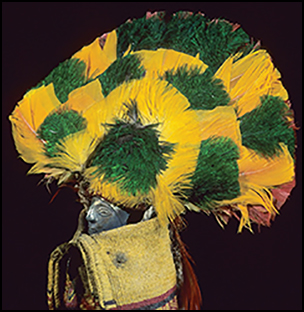Crossref Citations
This article has been cited by the following publications. This list is generated based on data provided by
Crossref.
Kosiba, Steve
2019.
New Digs: Networks, Assemblages, and the Dissolution of Binary Categories in Anthropological Archaeology.
American Anthropologist,
Vol. 121,
Issue. 2,
p.
447.
Coomes, Oliver T.
Abizaid, Christian
Takasaki, Yoshito
and
Rivas Panduro, Santiago
2021.
THE LOWER UCAYALI RIVER IN PREHISTORY: CULTURAL CHRONOLOGY, ARCHEOLOGICAL EVIDENCE AND A RECENTLY DISCOVERED PRE-COLUMBIAN SITE.
Geographical Review,
Vol. 111,
Issue. 1,
p.
145.
Capriles, José M.
Santoro, Calogero M.
George, Richard J.
Flores Bedregal, Eliana
Kennett, Douglas J.
Kistler, Logan
and
Rothhammer, Francisco
2021.
Pre-Columbian transregional captive rearing of Amazonian parrots in the Atacama Desert.
Proceedings of the National Academy of Sciences,
Vol. 118,
Issue. 15,
Hornborg, Alf
2021.
Consumption, Status, and Sustainability.
p.
193.
Blanco, Guillermo
Morinha, Francisco
Roques, Séverine
Hiraldo, Fernando
Rojas, Abraham
and
Tella, José L.
2021.
Fine-scale genetic structure in the critically endangered red-fronted macaw in the absence of geographic and ecological barriers.
Scientific Reports,
Vol. 11,
Issue. 1,
Biwer, Matthew E.
Álvarez, Willy Yépez
Bautista, Stefanie L.
and
Jennings, Justin
2022.
Hallucinogens, alcohol and shifting leadership strategies in the ancient Peruvian Andes.
Antiquity,
Vol. 96,
Issue. 385,
p.
142.
Reid, David A.
2023.
The role of temple institutions in Wari imperial expansion at Pakaytambo, Peru.
Journal of Anthropological Archaeology,
Vol. 69,
Issue. ,
p.
101485.
Clasby, Ryan
2023.
The Jaén Stone Bowl Tradition and Ceja de Selva Contributions to Early Andean Exchange Networks.
Latin American Antiquity,
Vol. 34,
Issue. 1,
p.
116.
Politis, Gustavo G.
and
Tissera, Luis E.
2023.
Prehispanic Macroregional Networks between the Southern Andes and the Lower Paraná River of South America.
Journal of Anthropological Research,
Vol. 79,
Issue. 3,
p.
307.





